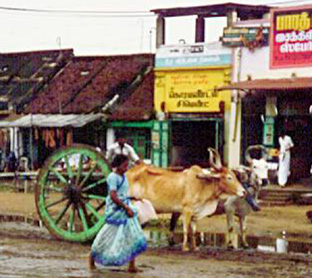 The Demand for Education
The Demand for EducationDual traditions | reforms | mass education | science and engineering | suggestions
 The Demand for Education
The Demand for Education
India: The Rise of an Asian Giant, D. Rothermund
There persists twin traditions:
older gurukul & guruparampara:
Sanskrit –medicine, astronomy, math, memorization
newer Anglo, British college system; tutorial & lecture;
English –language, law, literature; subject to Unversity of London
"This is how the Indians could imbibe the same liberal philosophy that was taught to their British contemporaries."
p. 184.
Three British Universities were established in 1857: Mumbai, Chennai, Kolkata
The arts colleges and law colleges were standard throughout these new Universities
"thus produced swarms of law graduates."
"The lawyers founded associations even in small district towns and these became centres of political debate and incipient nationalism."
p. 184.
1912, G. K. Gokhale promoted (but was unable to pass) compulsory free education for men 6 to 10 years of age.
p. 185.
This ideal of universal, free education became a reality upon Independence.
"This is the largest school meals program in the world and it has obviously made school attendance much more attractive."
p. 185.
1961-2005
Primary schools grew from 34 to 209 million students
Secondary 3.4 to 35 million students
"Demand for education in India has risen enormously in recent years."
p. 185.
"Due to this official neglect, private schools have sprung up everywhere."
p. 186.
"...still very much influenced by the British legacy."
Dual traditions | reforms | mass education | science and engineering | suggestions
but in the 19th century Anglo-Vedic colleges sprung up led by Arya Samaj reformers
radical Vedic college -- Gurukul Kangri, near Hardwar in 1900 taught in Sanskrit
p. 188.
Rabindranath Tagore created a school in 1901 & University in 1921 dedicated to the fine arts.
Nai Talim (new education)
Zakir Hussain drafted a plan for Gandhi a new national education; including a constructive program for the improvement of villages. (1935 on)
practical training in craft, agriculture and literacy.
Never took off as the government
"In independent India, the government adopted the colonial legacy and retained the old rules and regulations, no unorthodox curriculum or syllabus had a chance of being accepted by the authorities concerned."
p. 189.
Dual traditions | reforms | mass education | science and engineering | suggestions
The bias both racially and pedagogically of Britain meant that no science or technical education took root in 19th century India as it did in Germany and America.
p. 190.
The topographic and Geological Survey of India, however required Indian assistants and a Civil Engineer College est. in 1848 in Uttar Pradesh was in Roorkee.
Civil engineering courses here at Roorkee were copied by Kolkata 1856 and Chennai in 1858.
Natural science teaching and learning languished.
Mahendra Lal Sicar was a leading advocate in the quest for science education:
a physician with a deep interest in the natural sciences.
1879 he founded the India Association for the Cultivation of Science. IACS
p. 190.
University of Calcutta emerged as a center of innovative chemistry and physics education in postgraduate courses.
190-191.
Jamshetji Tata establishes the Indian Institute of Science IIS in Bangalore in 1907 modeled on the Johns Hopkins University example of graduate training
in the sciences.
Nehru (inspired by the Brit opposition to Tata ) created 23 research laboratories throughout India; under the CSIR Council of Scientific and Industrial Research
p. 191.
IIT modeled on MIT was the second Nehru achievement Indian Institutes of Tech.
á
1st in Kharagpur (Kolkata), 1951.
á
2d in Powai (Mumbai), 1958.
á
3d in Chennai, 1959
á
4th in Kanpur. 1959
á
5th in Delhi, 1961
á
6th Guwahati, Assam, 1994
á
7th Roorkee, 2001
pp. 191-192.
"Each of them is free to define its own curriculum."
p. 192.
Tata Institute of Fundamental Research in Mumbai est. 1945 by Homi Bhabha, TIFR
nuclear physics, and mathematics, later biology and other sciences
p. 193.
all IITs graduate about 5,000 degrees per year. "This output is insufficient"
"The great danger in present times is that such colleges find it difficult to recruit good staff as the salaries paid by private firms are so high that in comparison the pay of a lecturer is a pittance."
p.193.
"the target of spending is 6 percent of GDP on education"
p. 194.
Dual traditions | reforms | mass education | science and engineering | suggestions
"...the content of education needs attention."
more creative thinking focused on problem solving and research-based methods must permeate primary, secondary and tertiary education as rote memorization is still widespread.
practical training at the village school level -- soils, water, irrigation etc.
"The Prime Minister Dr. Manmohan Singh recalls that when he grew up in a small village in West Punjab, the schoolmaster, who was also the postmaster, was respected by everybody."
"improve their educational systems, for which the central government is willing to provide financial aid."
p.194.
"Preserving high standards in dissertation supervision is one of the most crucial tasks in the field of human resources development." in Indian Universities.
p. 195.
"India has a vast amount of human capital. With the 'demographic dividend' mentioned earlier there will be an increasing number of Indian people in gainful employment who are less encumbered by dependents. They will find this employment only if they have been trained and educated properly."
"As Gokhale said in 1912, the future of the nation is inextricably bound up with education."
p. 195.
Dietmar Rothermund, India: the rise of an Asian
Giant. New Haven, Yale University press, 2008.
Dual traditions | reforms | mass education | science and engineering | suggestions
United States - India Education Foundation: (for study in India)
An Environmental History of India